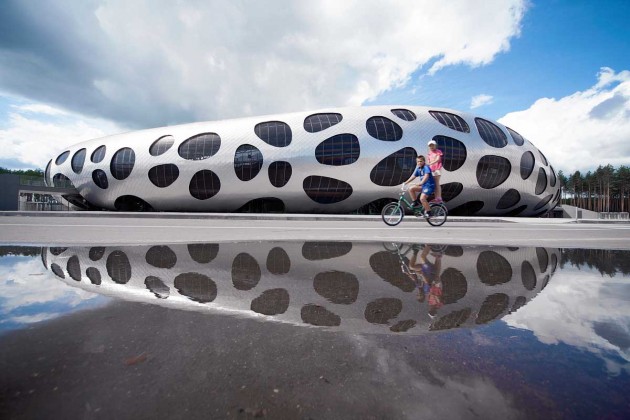By Gary Stix | October 26, 2014
Memory dust?
Scott Small, a professor of neurology at Columbia University’s College of Physicians and Surgeons, researches Alzheimer’s, but he also studies the memory loss that occurs during the normal aging process. Research on the commonplace “senior moments” focuses on the hippocampus, an area of the brain involved with formation of new memories. In particular, one area of the hippocampus, the dentate gyrus, which helps distinguish one object from another, has lured researchers on age-related memory problems.
In a study by Small and colleagues published Oct. 26 in Nature Neuroscience, naturally occurring chemicals in cocoa increased dentate gyrus blood flow. Psychological testing showed that the pattern recognition abilities of a typical 60-year-old on a high dose of the cocoa phytochemicals in the 37-person study matched those of a 30-or 40-year old after three months. The study received support from the food company Mars, but Small cautions against going out to gorge on Snickers Bars, as most of the beneficial chemicals, or flavanols, are removed when processing cocoa. An edited transcript of an interview with Small follows:
Can you explain what you found in your study?
The main motive of the study was to causally establish an anatomical source of age-related memory loss. A number of labs have shown in the last 10 years that there’s one area of the brain called the dentate gyrus that is linked to the aging process. But no one has tested that concept. Until now the observations have been correlational. There is decreased function in that region and, to prove causation, we were trying to see if we could reverse that.
We turned to cocoa flavanols because of a previous study in mice by another research group led by Rusty Gage at The Salk Institute that showed that flavanols improved the function of the hippocampus and specifically the dentate gyrus. Because it’s a dietary mix, it’s something we can actually give to you.
Finding the cause-and-effect relationship was the main motive for the study but even though it wasn’t our primary goal, we found that this dietary intervention can, in fact, ameliorate or even reverse age-related memory decline.
Do you think this could have an impact on people who have clinically diagnosed cognitive decline like Alzheimer’s?
This has not been formally tested for Alzheimer’s. My guess is that for Alzheimer’s, which is a terribly grinding disorder that involves death of brain cells, diet might not be enough. Age-related memory decline, which affects all of us, is pathophysiologically a lot more subtle and involves loss of synapses [the connection points between brain cells], but not cell loss.
What are the next steps for the cocoa flavanol research?
We’re planning another study, a much larger study, not just to replicate the first one that had pretty compelling statistics, but to extend our understanding. We’d like to test the amount of flavanols needed to produce this effect. Perhaps they might still be beneficial if we give a lower amount. We’d like to know more about the time course. In this first study, we tested the flavanols at the beginning and after three months. We’d also like to know whether you get the benefits after taking them for a month. And we’d like to know once you stop taking the cocoa flavanols how long the benefit lasts.
The flavanols you’re talking about are already commercially available.
You’d have to eat 25 chocolate bars a day to get 900 milligrams of flavanols, the amount we used, which is a bad idea. There is a commercial formulation with a much lower amount [CocoaVia, a supplement from Mars, Inc.]. No commercially available formulation has 900 milligrams. Maybe in the future, companies will develop that.
You were even able to create a psychological test was specifically designed to assess the dentate gyrus’s pattern recognition capabilities. What’s the significance of that?
This is part of a growing wave of studies trying to develop a more sophisticated cognitive tool kit. I think the next generation of neuropsycholgical tests are going to incorporate these new batteries of tests that are more nuanced, more sensitive for selective regions of the brain.
You also study Alzheimer’s. There are a lot of drugs that have failed for dementia. Is there any hope ahead for Alzheimer treatments?
We as doctors always have this tendency to talk about things in terms reminiscent of Soviet five-year plans. In five years, we’ll have a cure. Fifteen years ago when I was first getting started, I was blatantly pessimistic about Alzheimer’s, but that’s changed.
It really has to do with the logic of rational drug discovery, which tries to understand what’s fundamentally wrong at the molecular level. That is how the field has shifted. Genetics, imaging and microarray studies have provided new insight into the defects driving Alzheimer’s.
The older crop of drugs were developed without that understanding. Now we have this newer set of drugs that are being developed that come out of this new biological understanding. It’s dangerous to say what’s the probability in five years of having effective drugs. It’s hard to know.
I don’t like baseball, but I’ll use a baseball analogy. In the past we were on the wrong playing field. Now we’re on the right playing field, which means a home run will be hit. Whether it’s in the next year or the next five years, it’s hard to say.
.source:


















































